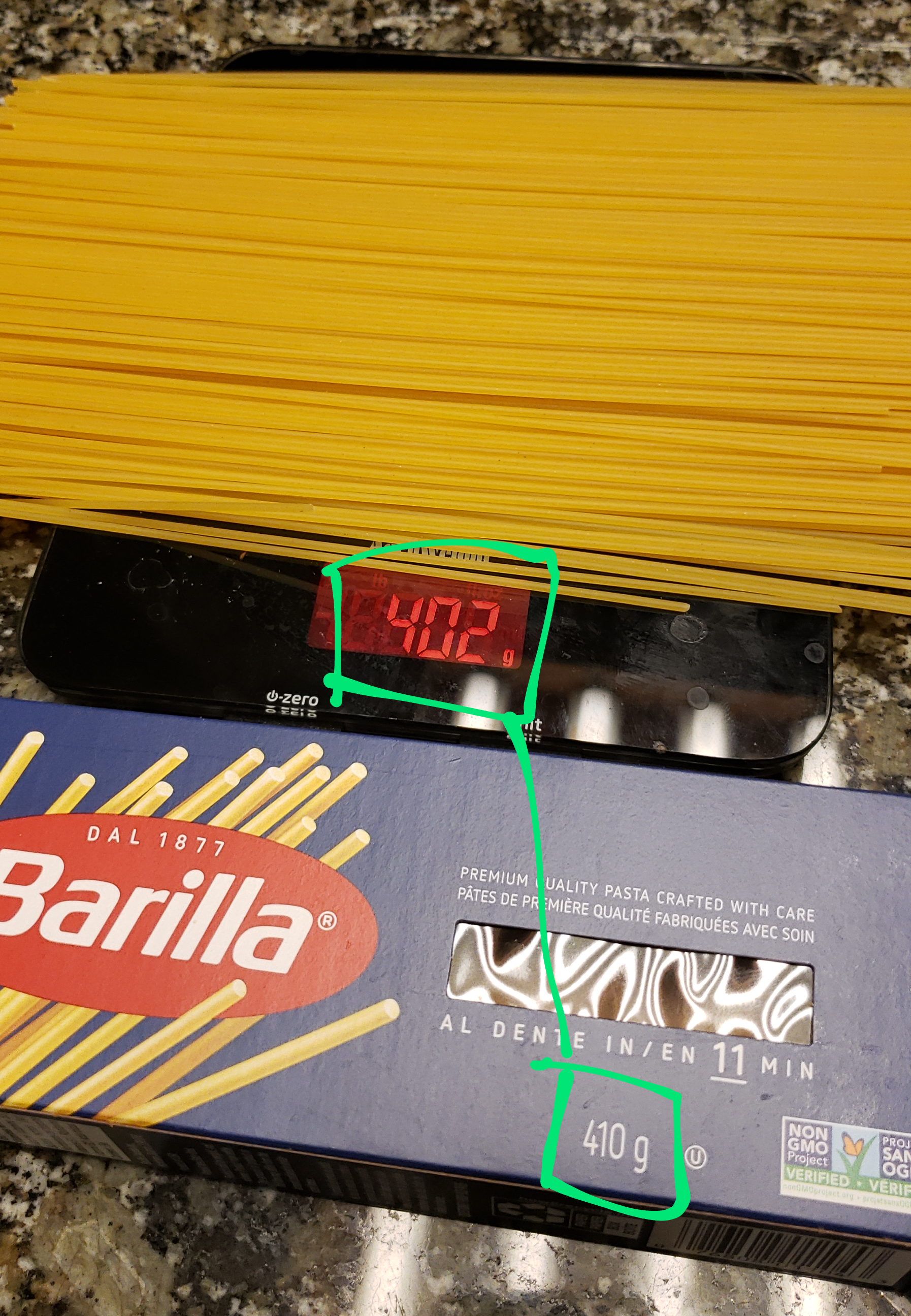I bought 175 g pack of salami which had 162 g of salami as well.
How do we know your scale is right?
While it’s hard to prove that it’s been done correctly a lot of scales do come with calibration weights.
A lot of cheap kitchen scales are also just crap. Talk to your local drug dealer about what brand of scale might be right for you.
Why I like my mechanical one. I can recalibrate it myself. Heck I taught my 10 year old to do it, it isn’t rocket surgery.
My drug scale is my kitchen scale is my drug scale
You can also weigh water, 100ml weighs 100 grams
But how do you know that your measurement of 100mL of water is accurate?
There are no moving parts so there should be very little drift.
Just weigh it, duh.
Just use a scale and measure 100g of water
DONT FORGET TO SUBTRACT THE WEIGHT OF THE BEAKER
Also just as plausible that there’s still some broken noodle crumbs and fragments stuck in the bottom flaps of the box.
Huh? Well how do we know that any scale at all is right?
Pretty sure that every modern scale has a “tare” button that resets the weight and zeroes everything out.
Well how do we know that any scale at all is right?
My lab has weights that get calibrated against a NIST standard annually. We use those weights to perform daily quality control that our scale is accurate (to +/- 0.01g). If the quality control fails then we recalibrate the scale.
Taring isn’t the same as calibration. Every scale should have instructions on its tolerance (± x grams) and a calibration weight. You’ll have to buy the calibration weight separately.
That is only single point calibration. You want more than that in case the transfer function is non-linear. Ideally at least two for the extremes of range.
Basically imagine if y does not equal x, say y = x -0.01*x + b. Your tare is going to adjust b such that at x = 0 you get y equals 0. That doesn’t fix x is equal to 900. At 900 you would get 891.
Generally speaking for weight you have differential or integral non-linearity. You fix both by multiple calibration points. Which leads to the range transition problem but whatever. No excuse anymore with FPGAs.
Yeah, but if it measures every 1 gram at 0.98 gram, it will display less in the end





